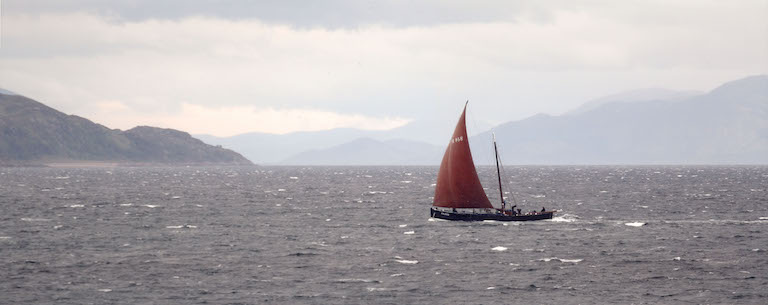Since the late 19th century, fishing methods have changed radically. New technology has been used to increase fishing boats’ efficiency and the size of catches.

Baiting lines, Buckhaven, around 1900
Before the 1880s, long-lining was the usual method used to catch white (demersal) fish such as cod, halibut, saithe, ling and flat fish which live at the bottom of the sea. It was very labour-intensive but resulted in a high quality catch. Small line fishing was a family affair with women and children responsible for preparing the equipment. This was a line, up to a mile in length, to which were attached snoods or shorter pieces of line which were baited with fish or shellfish.
Great line fishing was similar to small line fishing but was undertaken in deeper waters, further out to sea. The lines could be up to 15 miles in length and would be fitted with 5,000 hooks. The fishermen usually baited the lines on the boat. Because of the work involved in preparing and hauling the lines, new methods of catching white fish were sought. Trawling was introduced into Scotland from England in the late 19th Century and, from the 1920s, seine-netting was introduced from Denmark.
The traditional method used for catching herring was the drift net. A long net in the form of a curtain was suspended from corks floating on the surface. The fish were trapped by the gills as they swam against the net. In the sheltered waters around Loch Fyne in Argyll, ring-netting for herring developed. The method involved surrounding a shoal of herring with a net and then pulling the ring tight to trap them. This method evolved in the later 20th century into the purse-seine net. A low net was set in the water to circle the shoal. Then its bottom was drawn together so that a huge pond of webbing contained the catch, the pond becoming smaller until the fish were gathered alongside the vessel. Today mid-water trawlers can alter the position of their nets in the water to catch pelagic fish such as herring and mackerel.
Modern Times

Ocean Harvest PD198
Recent years have seen the fishing industry increasingly regulated and fishing activity concentrated on the fewer, larger ports with the facilities to handle the large catches landed by the efficient vessels of today. Fishermen and boats continue to fish out of Aberdeen, Peterhead, Fraserburgh and Shetland while falling fish stocks in recent years and a change in the markets for different types of fish have caused the industry to decline in the smaller communities.
However, fishermen all around the coast have diversified into catching shellfish, particularly prawns, once seen as worthless, and numbers of small boats are increasing.























